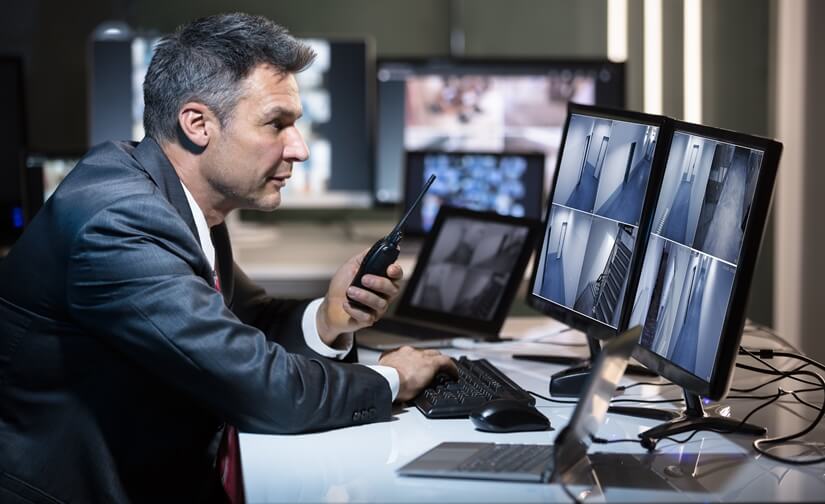Two-way radios have undoubtedly proven their worth and durability, particularly in a world where we are recurrently seeing many other means of communication being replaced by more technological advanced devices. Even though smartphones are in everyone’s pocket these days, two-way radios are still being heavily depended on, especially in workplaces.
And while their value has been proven, it requires some basic know-how to operate them efficiently. It may seem obvious, but a fact sometimes forgotten is that walkie talkies don’t allow users to simultaneously hear and talk back, thus the necessity of a certain radio etiquette to communicate clearly.
To help you keep efficient and effective communication using two-way radios, we provide you with 10 key tips in radio etiquette:
-
Get to grips with the terms
In radio messaging, there are specific terms for greeting, answering and terminating a conversation. This is because regular words are sometimes ambiguous or unclear in short radio communications. Walkie talkie lingo has been proven over the years and has become universally recognised. You may have even heard it in movies or TV.
Some of the most common are:
- Affirmative meaning Yes.
- Negative meaning No.
- Roger/Roger That meaning the message was understood.
- Copy/Read meaning Have you understood/received the message, as in “Do you copy me?”.
- Over (used at the end of a sentence) meaning The talker has finished their transmission.
- Stand By meaning Wait.
- Wilco meaning I will comply/follow the instructions.
- Out meaning The communication is concluded.
-
Learn the NATO Phonetic Alphabet
You might know this one already from movies, too. T and D, for instance, may be different letters but their sound, and even more through radio, can be misunderstood and unclear. That is why with the NATO Phonetic Alphabet, we spell out words by their NATO phonetic, that is a corresponding word started by the letter in question.
For example, if you need to message the letters “AD” through radio, you should say “alpha delta”.
-
Pause before speaking
This is a habit you should make sure to adopt. Pausing for a second between pressing the button to transmit and actually speaking assures that the first words won’t get cut off, allowing for a full and clear message.
-
Introduce yourself
Not all walkie talkies have caller ID, so it is good practice to identify yourself and, if you know who you’re reaching, the person you wish to address too. Sometimes, work staff have their designated call signs, and if so, you should also make use of it when addressing other users.
-
Keep it Short
Two-way radios have not been designed for long conversations. They are meant to be used for quick and swift talks, like give indications to solve particular problems and to provide immediate responses.
As such, your messages should be short and straight to the point, avoiding long transmissions.
In case you do need to get a bigger message across, use the word “break” at the end of one or two sentences and release the button. This way, the other party can intervene if needed as well.
-
Avoid Interruptions
When communicating, avoid interrupting others as much as possible. Wait for them to end the message or conversation, if it is between other intervenients, and then transmit.
In case of emergency, and you have to interrupt, begin the message saying, “Break Break Break” and then state your message.
-
Don’t raise your tone
Talking through a walkie talkie should be just like a normal conversation in terms of speed and tone. Speaking too quick or slow will make the call imperceptible or too long and if you yell the transmission will just be a blown sound on the other party.
None of these will help you convey your message any better, or clearer so keep the radio’s microphone about three to five inches away from your mouth and speak normally.
-
English is sovereign
English is the official language for two-way radio communication internationally. Apart from specific guidelines from your organisation, you should stick to the English language.
-
Assume others are listening
Walkie talkies are open to everyone that can catch your radio frequency, whether for eavesdrop or just because the working group is all connected. If you can’t restrict the conversation to the users you want to communicate with, or use encryption, you should avoid transmitting confidential or sensitive information.
-
Check and maintain your equipment
Regular check, care and maintenance are imperative with walkie talkie devices. All of their functionality will be voided if they run out of battery or get clogged mics from improper maintenance.
Before important operations, also check the range beforehand to ensure your work staff won’t be left stranded.
Though they may seem to require much experience and practice, following these etiquette tips to a T (or Tango) will make the most of your use of walkie-talkies and improve your professional performance in the process.







